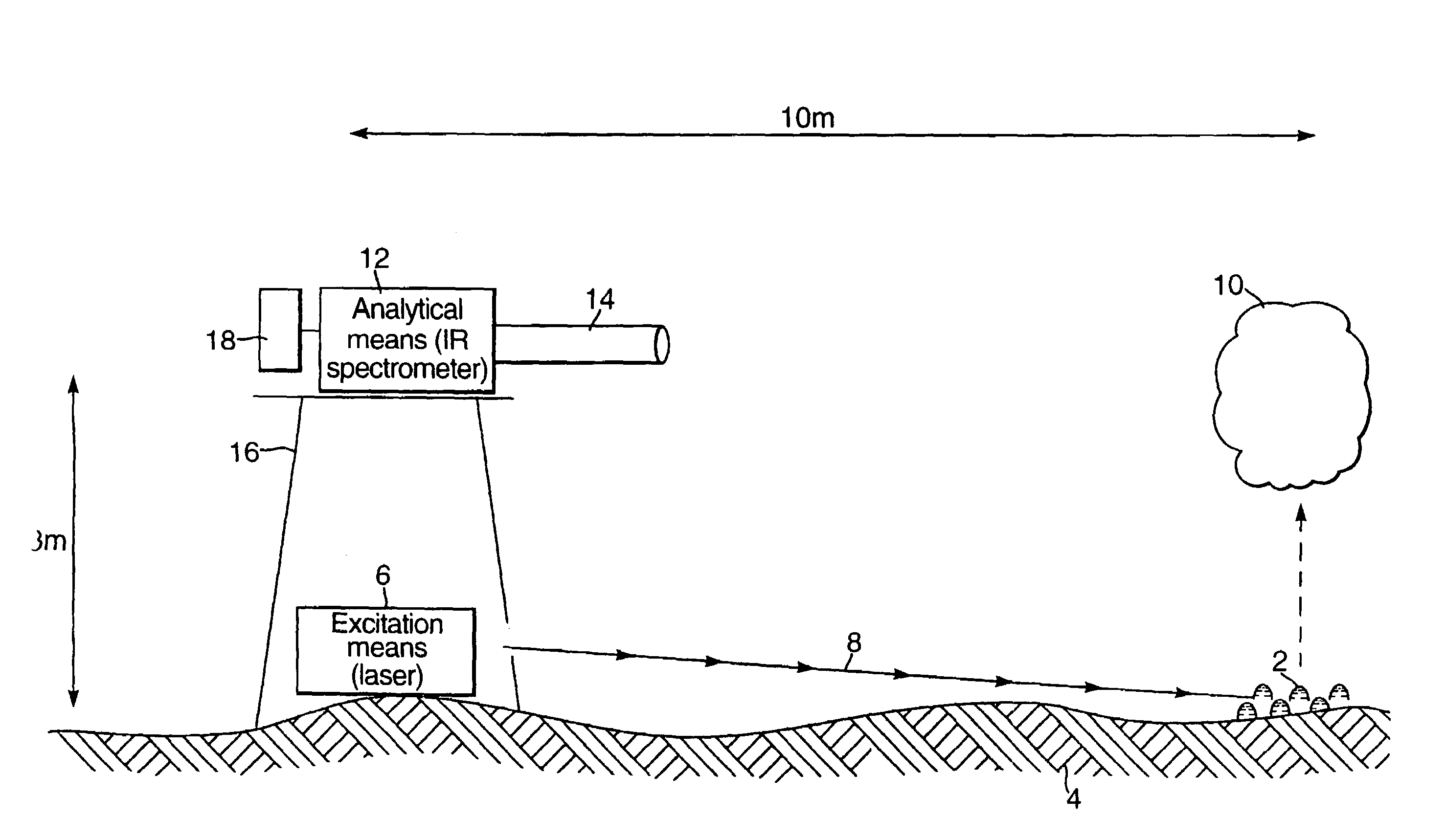Method and apparatus for stand-off chemical detection
a stand-off chemical and detection method technology, applied in the field of stand-off chemical detection methods and equipment, can solve the problems of unsuitable methods for field use to identify unknown and potentially hazardous materials, sampling and analysis poses a real risk to the personnel involved, and pollutes the environment and is toxic to land or water
- Summary
- Abstract
- Description
- Claims
- Application Information
AI Technical Summary
Benefits of technology
Problems solved by technology
Method used
Image
Examples
example 1
[0062]A continuous wave CO2 laser (Edinburgh Instruments), operating at 9.6 μm, with an output power of 4.5 W, was situated approximately 1 m away from a droplet of liquid methyl salicylate of approximate diameter 10 mm. The laser beam was directed using appropriate mirrors and focussed on to the droplet using a lens made of zinc selenide and then used to vaporise the sample to create a vapour plume directly above the droplet. The infrared emission spectrum of the vapour plume was then measured using a MEDAC AM Fourier Transform Infrared (FTIR) spectrometer, with 1 m focal length collection lens placed in front of the open emission port, situated 1 m away from the vapour and positioned at right angles to the laser. The infrared spectrum was obtained by operating the FTIR at between 1 and 20 scans per second and using a suitable resolution of 1 to 32 cm−1. The collected spectra were compared with library spectra to provide positive identification of the liquid methyl salicylate from ...
example 2
[0063]A continuous wave CO2 laser (Edinburgh Instruments), operating at 9.25 μm, with an output power of 10 W, was situated approximately 5 m away from a droplet of liquid chemical warfare agent of approximate diameter 10 mm. The laser beam was directed unfocussed on to the droplet and then used to vaporise the sample to create a vapour plume directly above the droplet. The infrared emission spectrum of the vapour plume was then measured using a MIDAC AM Fourier Transform Infrared (FTIR) spectrometer, fitted with a Cassegrain telescope with a diameter of 25 cm focused to infinity, situated 5 m away from the vapour and positioned alongside the laser. The infrared spectrum was obtained by operating the FTIR at between 1 and 20 scans per second and using a suitable resolution of 1 to 32 cm−1. The collected spectra were compared with library spectra to provide positive identification of the individual components of the liquid chemical warfare agent mixture.
PUM
| Property | Measurement | Unit |
|---|---|---|
| power | aaaaa | aaaaa |
| power | aaaaa | aaaaa |
| diameter | aaaaa | aaaaa |
Abstract
Description
Claims
Application Information
 Login to View More
Login to View More - R&D
- Intellectual Property
- Life Sciences
- Materials
- Tech Scout
- Unparalleled Data Quality
- Higher Quality Content
- 60% Fewer Hallucinations
Browse by: Latest US Patents, China's latest patents, Technical Efficacy Thesaurus, Application Domain, Technology Topic, Popular Technical Reports.
© 2025 PatSnap. All rights reserved.Legal|Privacy policy|Modern Slavery Act Transparency Statement|Sitemap|About US| Contact US: help@patsnap.com


